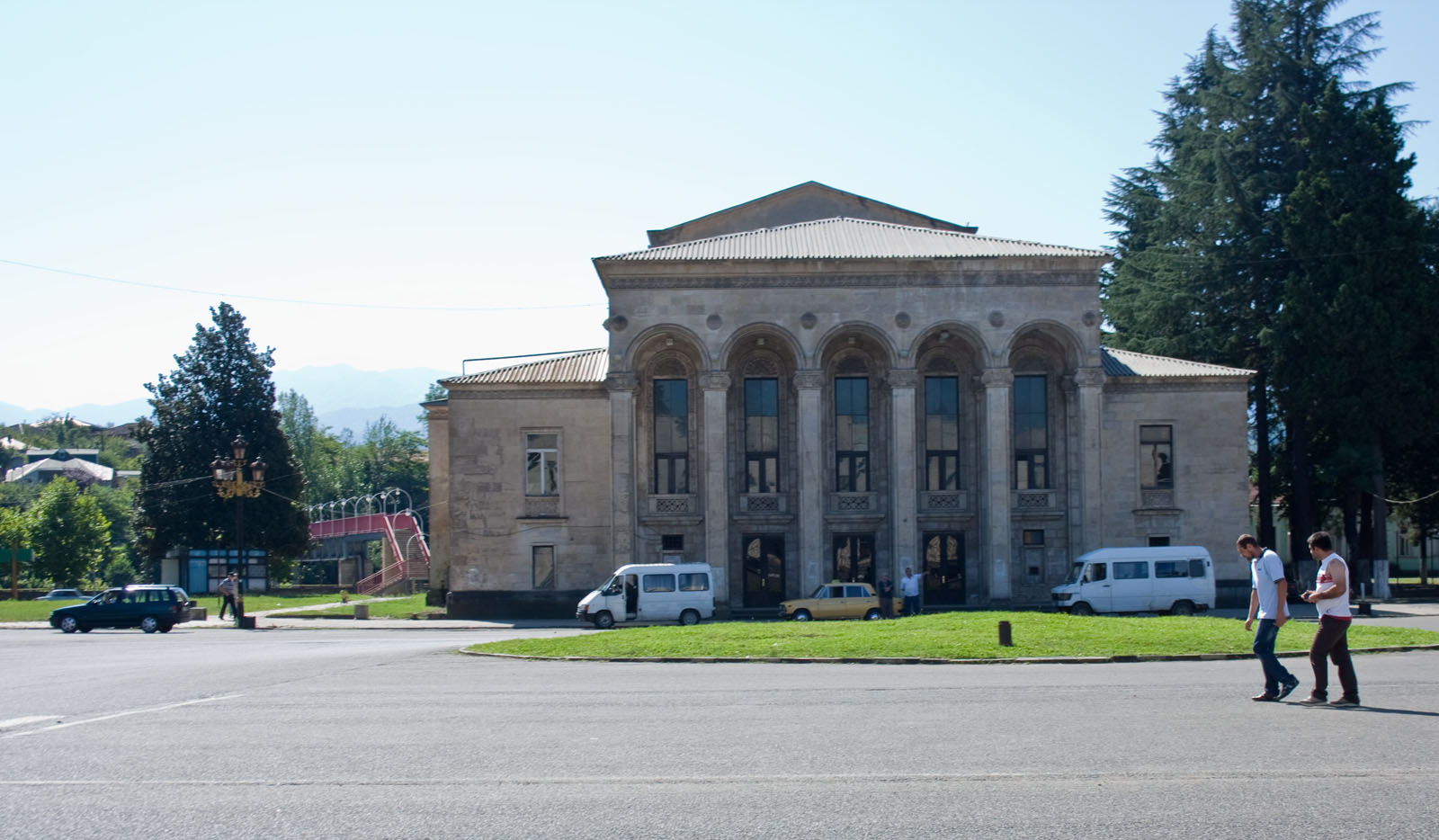|
Tabakini Monastery
The Tabakini monastery of St. George () is a monastery located west of Georgia, in the upper part of Imereti, 7-8 kilometers from the city of Zestafoni. History The construction of the monastery has been dated between the seventh and eighth centuries. Tabakinsky is known for its special architecture, rich history and 16th-century murals. The monastery, where 70 monks worked at a time, made a great contribution to the country's history. Here, an outstanding ascetic of the 19th century, Hilarion Kartveli, spent part of his childhood. Under the communist regime, the monastery was ransacked and destroyed. The old part consists of a church with two naves with a crypt and a side chapel, built in the seventh and eighth centuries. The church was painted during the first half of the 16th century and has a bell tower from a later period. The monastery retains the image of King Bagrat III of Imereti Bagrat III ( ka, ბაგრატ III) (1495-1565), of the Bagrationi dynasty, was a ... [...More Info...] [...Related Items...] OR: [Wikipedia] [Google] [Baidu] |
Tabakini Monastery (16)
The Tabakini monastery of St. George () is a monastery located west of Georgia, in the upper part of Imereti, 7-8 kilometers from the city of Zestafoni. History The construction of the monastery has been dated between the seventh and eighth centuries. Tabakinsky is known for its special architecture, rich history and 16th-century murals. The monastery, where 70 monks worked at a time, made a great contribution to the country's history. Here, an outstanding ascetic of the 19th century, Hilarion Kartveli, spent part of his childhood. Under the communist regime, the monastery was ransacked and destroyed. The old part consists of a church with two naves with a crypt and a side chapel, built in the seventh and eighth centuries. The church was painted during the first half of the 16th century and has a bell tower from a later period. The monastery retains the image of King Bagrat III of Imereti Bagrat III ( ka, ბაგრატ III) (1495-1565), of the Bagrationi dynasty, was a K ... [...More Info...] [...Related Items...] OR: [Wikipedia] [Google] [Baidu] |
Georgia (country)
Georgia (, ; ) is a transcontinental country at the intersection of Eastern Europe and Western Asia. It is part of the Caucasus region, bounded by the Black Sea to the west, by Russia to the north and northeast, by Turkey to the southwest, by Armenia to the south, and by Azerbaijan to the southeast. The country covers an area of , and has a population of 3.7 million people. Tbilisi is its capital as well as its largest city, home to roughly a third of the Georgian population. During the classical era, several independent kingdoms became established in what is now Georgia, such as Colchis and Iberia. In the early 4th century, ethnic Georgians officially adopted Christianity, which contributed to the spiritual and political unification of the early Georgian states. In the Middle Ages, the unified Kingdom of Georgia emerged and reached its Golden Age during the reign of King David IV and Queen Tamar in the 12th and early 13th centuries. Thereafter, the kingdom decl ... [...More Info...] [...Related Items...] OR: [Wikipedia] [Google] [Baidu] |
Zestaponi
Zestafoni or Zestaponi ( ka, ზესტაფონი, tr, ) is the administrative center of Zestafoni District in Western Georgia. Zestafoni is the center of an ancient, historical part of Georgia – Margveti, which is a part of Imereti province. Zestafoni is the center of Margveti's Eparchy of the Georgian Orthodox Church. Zestafoni is situated in the furthest east of the Colchis Plateau, and is built on both banks of the Qvirila River. It is an important industrial center, with a large ferro-alloy plant processing manganese ore from nearby Chiatura. Zestafoni is in the Kolkheti lowlands, a semi-tropical region with relatively cold winters averaging in January and hot summers averaging in August. The surrounding countryside is a wine-growing region. Industry The town of Zestafoni and the smaller neighboring town of Shorapani are industrial centers. The Zestafoni ferro-alloy plant processes raw manganese ore shipped by rail down the Kvirila valley from Chiatura, sup ... [...More Info...] [...Related Items...] OR: [Wikipedia] [Google] [Baidu] |
Bagrat III Of Imereti
Bagrat III ( ka, ბაგრატ III) (1495-1565), of the Bagrationi dynasty, was a King of Imereti from April 1, 1510, to 1565. He succeeded upon the death of his father, Alexander II, and faced repeated assaults from the Ottoman Turks as well as the conflicts with his ostensible vassal princes of Mingrelia, Guria, and Abkhazia who were frequently joining the enemy. Reign In 1512, the Ottomans invaded Imereti through its southern neighbor Samtskhe and unexpectedly struck Bagrat’s capital Kutaisi. After the Ottoman army left Imereti, Bagrat launched a program of restoration, reorganized the church, and enforced a law condemning to death all who engaged in slave trading practiced by the Turks in conjunction with some Georgian nobles. In 1533, he persuaded Mamia I Gurieli of Guria and Mamia III Dadiani of Mingrelia to organize a combined and eventually disastrous expedition against the piratical North Caucasian tribe of Zichi which had come under the Turkish influence. De ... [...More Info...] [...Related Items...] OR: [Wikipedia] [Google] [Baidu] |
.jpg)
